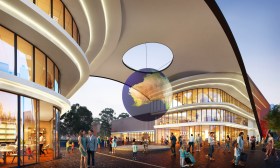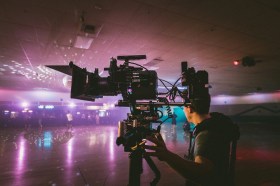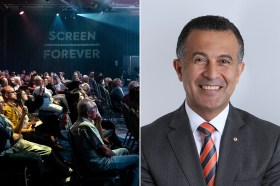At a time when strengthening the confidence of our most creative people is crucial to Australia’s future, we’d expect a pre-election budget to be filled with visionary commitments.
Instead, the arts narrative in last night’s Federal Budget 2022-23 is of decreases – a narrative we need to work hard to piece together among the various Budget Papers, Ministerial and Portfolio Budget Statements.
And where increases are announced, the Budget takes the curious step of folding last year’s money into the commitment, burdening that piecing-together work with comparisons to previous announcements to understand what’s now being presented as new money.
Let’s take a look at the decreases, increases, structural changes and lost opportunities, identifying helpful talking points for striking up conversations with candidates between now and mid-May.
Decreases of 10.6% for the first two years, and then 13.1% for the next two
The Australian Government’s arts and cultural heritage expenditure includes the Office for the Arts, the Australia Council, and the National Cultural Institutions such as the National Gallery of Australia and the National Museum of Australia.
In Budget Paper No. 1, we learn that ‘Expenses under the arts and cultural heritage sub-function are estimated to decrease by 10.6 per cent in real terms from 2021-22 to 2022-23 and decrease by 13.1 per cent in real terms from 2022-23 to 2025-26.’
The explanation offered references the pandemic: they’re decreases off a high base of ‘temporary support measures, many of which terminate in 2022-23.’ Given the National Cultural Institutions have been seeking additional funds for some time to redress urgent maintenance and collections issues, this approach ignores that urgency.
In Budget Paper No. 2, we find the Budget’s only arts increase: ‘The Government will provide an additional $38.3 million over 2 years from 2021-22 to support the arts sector in recovering from COVID-19.’
An additional $38.3m over two years? One of which is almost over? Let’s take a closer look at what’s being presented as additional:
- $9m to Screen Australia in the current financial year for local cinemas – so nothing at all in new money for Screen Australia in the period covered by Budget 2022-23.
- $3.5m this financial year and $5.8m next financial year for the National Museum of Australia – so that’s $5.8m in new money.
- $20m to run RISE until 30 September, $2m of which has already been spend this financial year – so $18m in new money.
That leaves us with an additional $23.8m for Budget 2022-23, addressing only the tail end of pandemic support.
Despite a decade of stagnation, efficiency dividends and cuts that have seen Australian Government investment in arts and culture go backwards, there is no going forwards in this Budget.
But wasn’t COVID money always just a temporary support?
Yes and no.
Within the first months of the pandemic’s impact, industry leaders surveyed the scene and assessed what would be needed to get through the crisis. However, rather than offering funding programs at ambitious scale to protect and support careers and companies facing complete devastation, the Australian Government launched Restart Investment to Sustain and Expand (RISE): to sustain and expand, not protect and support.
As a result, millions in RISE money has gone to new and major commercial productions, or events presented by people with no experience. Unlike the Australia Council, these funding decisions have not been peer-assessed.
The impact of funds at that scale is significant; this program was not designed as a temporary support. Given the RISE funds greatly exceed the Australia Council’s grant-making scope, this has instead been a seismic reconfiguration in public arts investment – an impact easily interpretable as structural as opposed to remedial.
Australia’s arts and cultural sector was always going to astound audiences across the nation when ambitious public investment was there to support accessibility, touring and risk-taking. It took a pandemic for the government to invest at levels the industry’s been calling for across the past decade. This level of ambition is wanted and needed – if administered with peer-assessed integrity by the Australia Council. Switching it off now will have dire consequences .
The impact will be felt acutely regionally: the increase in the Regional Arts Fund, which was halved almost a decade ago without explanation, will not be sustained.
The industry responds
The MEAA today notes that ‘the sector is doomed to return to the under-investment of the pre-COVID years … treading water at best as short-term relief for the pandemic is wound up.’
And Live Performance Australia outlines what’s urgently needed, including tax incentives and a temporary Live Entertainment Events Insurance Scheme: ‘We now face a new set of challenges as we rebuild and which require targeted measures to deal with ongoing COVID impacts, including further disruption due to infection and isolation and a critical skills shortage.’
The screen sector continues to assess Budget 2022-23, especially in the light of local content commitments to streaming giants and the impacts on local industry articulated yesterday.
Looking at the impact of decreases across future years, critic and commentator Alison Croggon calculates that ‘Funding will keep being cut: by 2025-26, the Arts portfolio will receive $744m, a 25% reduction from this year.’
Future arts and cultural alignment with key Budget ‘Outcome’ areas
The immediate impact of the pandemic on the arts was so great a matter of national significance that the Treasurer mentioned it in his Budget speech last year.
No need to go looking through the papers for budget commitments to the Australia Council or Screen Australia, however: unfortunately, there’s nothing there.
During the pandemic, the Australia Council repurposed its own funds to provide urgent crisis relief funding, which meant cutting or ending a range of valuable programs. Meanwhile, the Australian Government provided $400 million to attract foreign film productions to Australia, raising concerns from the Screen Producers Association about the lack of support for local industry.
So how can we ensure that the Budget aligns its investments with matters of national significance?
The Budget Statements for the Infrastructure, Transport, Regional Development and Communications Portfolio (and the Arts) present forward expenditure against a range of ‘Outcome’ areas.
In this portfolio there are six such areas, spanning infrastructure, transport, cities and regions, governance and service delivery, communications, and arts and culture.
That final one, Outcome 6, reads in full: ‘Participation in, and access to, Australia’s arts and culture through developing and supporting cultural expression.’
A range of analyses follow, demonstrating budgetary and program alignment with one or more of these Outcomes – except arts and culture, which are aligned only with Outcome 6.
‘Strong creative and cultural industries are critical to both economic growth and a cohesive society,’ says the Portfolio’s Strategic Direction Statement. ‘We will continue to support inclusiveness and growth in Australia’s creative sector, protecting and promoting Australian content and culture that enriches our communities.’
Reading through the document, it’s clear that a cross-portfolio and whole-of-government approach to the arts will be an excellent way of achieving each of those Outcomes.
No other area of government policy can yield such rich outcomes for all of Australia across our cities and regions, including via cultural and transport infrastructure, good governance and service delivery, and of course communications.
What’s next?
Tomorrow night (Thursday 31 March) the Opposition will make their Budget Reply speech, and within the coming fortnight the Prime Minister will call the election, likely to be held on Saturday 14 May.
With so many seats truly in contention, candidates will be ready to engage with the issues that matter most. Let’s be sure to make some new friends – and make our voices heard.





